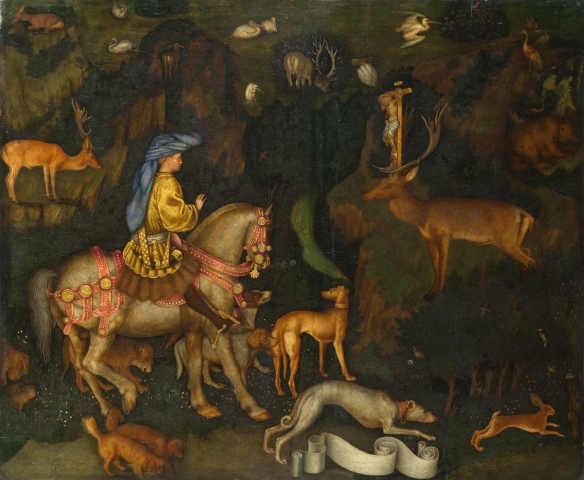
The Vision of St. Eustace – Pisanello (1436-1438)
Freud claimed that a mourner perceives the world as empty after the loss of a love-object. Sebald’s narrator in Vertigo is filled with this sense of melancholy, which coloured my days reading this book. This mood finds an echo, not the acerbic, comic melancholy of Beckett, but the colder, more nondescript disposition of Virginia Woolf that often brings to life memories that are ludicrous yet painful.
It is easy to forget the radical modernity of Sebald’s form, now that bookshop shelves are filled with semi-autobiographical books complete with narrators that wander around digressing wildly. His more nuanced ways of exploring identity and memory have come to shape so much contemporary fiction, but it takes more than apparent formlessness and lack of plot to resolve the artistic challenges of this type of novel. Sebald is not merely playing with form, he is fundamentally a storyteller.
In Vertigo, Sebald often uses visual arts, notably Pisanello and Tiepolo, as points of reference, exploring how the visual arts can create a parallel narrative of our memories. The effect is reinforced with Sebald’s now-signature, cryptic photographs scattered throughout the text. No better excuse to post The Vision of St. Eustace, one of my favourite of Pisanello’s paintings from the National Gallery.

I read this one a few years ago and really liked it. Reading Sebald can be a rather intense experience I find. I like your comparison to Woolf. It totally works.
Thanks, Stefanie, Sebald, Woolf and Beckett are in silent dialogue in my head.
I am enjoying these posts and must get back on track with my own re-reading of the four prose works which I started with Vertigo over a year ago, intending to read one each year. Then perhaps I will move on to the poetry and critical essays, which you make sound just as intrinsic to his work.
Thanks, Seamus, pleased you enjoyed the posts. After Nature was Sebald’s first published narrative, but as Ruth Franklin suggests in her intelligent review, it benefits by being read after the 4 prose works. The critical essays augment the prose works with the difference, I presume, that they have no fictional elements.